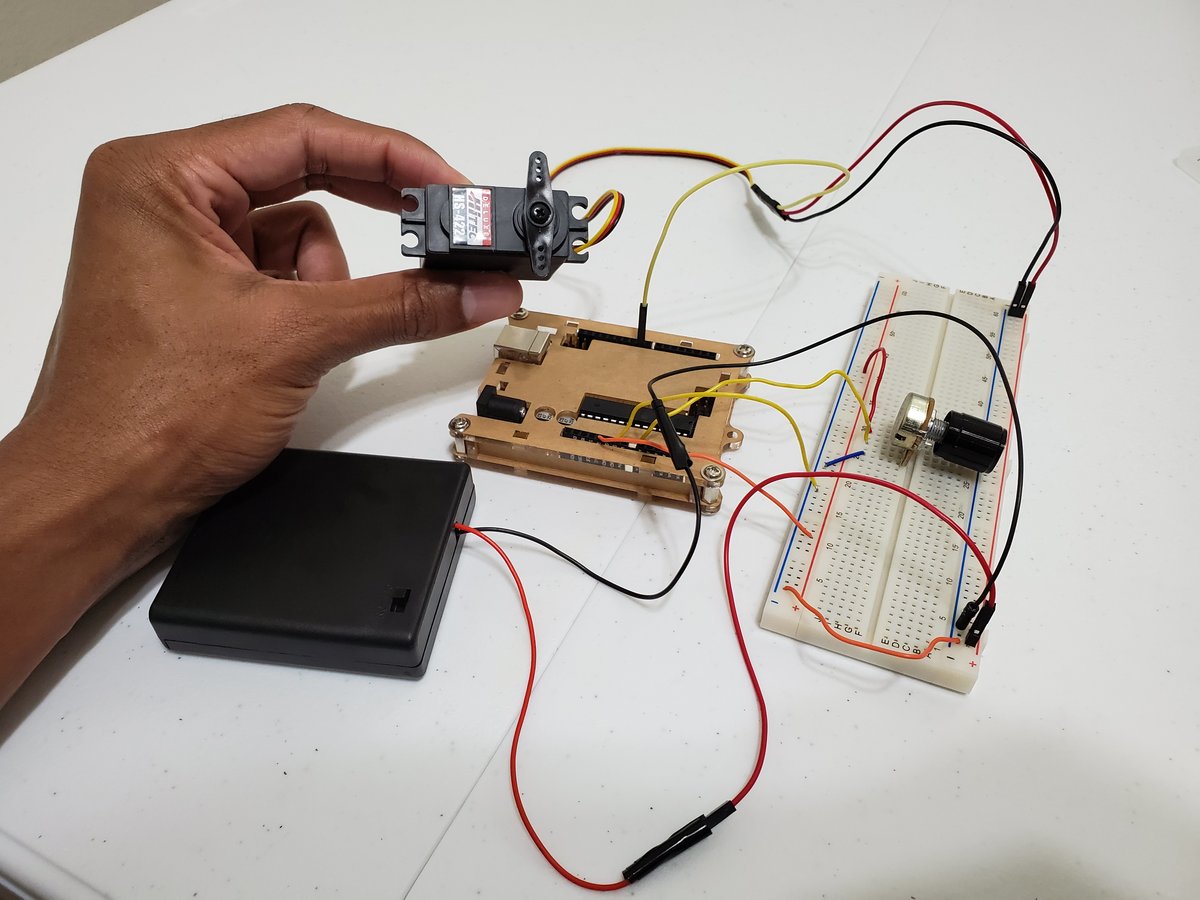

In fact, if we reduce the duration of the signal state 1, we will reduce the duty cycle. 2 ms period square wave (440 Hz)īut you can have other pulse trains with different duty cycles. equal to that part of the signal with state 0 ). For example, the classic square wave has a duty cycle of 50%, since the duration of the pulse (part of the signal with state 1) is equal to half the period of the wave (i.e. This train of pulses is characterized by the duty cycle, that is the time occupied by the pulse with respect to the period destined for a single signal. The length of the pulse in a train of signals is defined by the Pulse Modulation Width (PMW). Control is achieved by adjusting the length of a square wave pulse sent to the servo motor. How servo motors workĪ servo motor controls the rotation of a DC motor through a control circuit that adjusts its angle. Thanks to this mechanism, the servo motors are able to guarantee very precise control over the degree of rotation of its pin.

Once the desired angle is reached, the control circuit blocks the motor. Componenti del meccanismo di demoltiplica e motore DCĪs for the control of the rotation angle, this is implemented through an internal control circuit which, thanks to a resistive potentiometer, is able to know the rotation angle of the pin. The rotation of the output pin is obtained through a DC motor (direct current) connected to a reduction mechanism that allows to increase the torque during the rotation phase, reducing the speed and increasing the torsion force. To achieve this particular movement, one must analyze in detail how a servo motor is composed inside. Other possible applications can be those in robotics, when you want to make certain components assume particular angles with each other. Just think of simple modeling, in which we want to use this motor to adjust the rotation of a rudder for a ship or an airplane, or that of a steering wheel to turn the wheels at a certain angle. Having a motor that adjusts the rotation of an axis to make it assume a precise desired angle is useful in many applications. What is a Servo MotorĪ servo motor has the peculiarity of setting the rotation transmission pin on exact angles included in a certain range, which often go from 0 to 180 °, but there are also models that cover greater ranges.
CONTROLLING SPEED SERVO MOTOR ARDUINO HOW TO
In this article we will first see what servo motors are, how to use them and finally how to program Arduino in order to use them with some simple examples. Model making makes a lot of use of this type of motors and there are many low-cost servo motors available on the market, also useful for educational purposes. Servo motors are a particular type of motor, which thanks to their characteristics and ease of use, are often used in the first examples of motor control on boards such as Arduino or Raspberry.


 0 kommentar(er)
0 kommentar(er)
